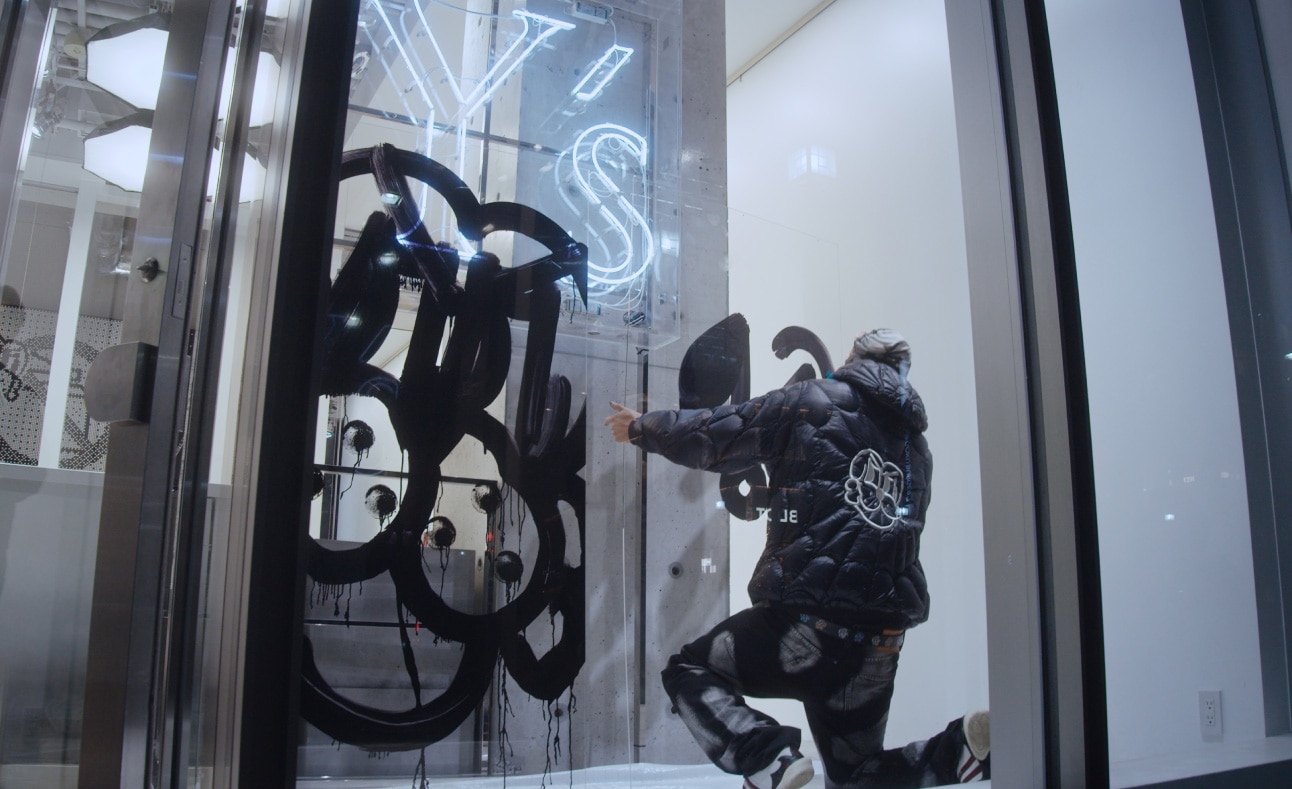
An interview with Junji Hata, who has photographed Japanese “dekotora” (decorated trucks) for the past 15-years, and WILDSIDE Collaboration Curator POGGY, who is responsible for initiating this collaboration.
―Tell us about the origins and the appeal of “dekotora.”
Junji: It is said that “dekotora” first appeared in the 1960s, when trucks that were used around harbors were coated in stainless steel to prevent rusting.
From the 1970s onwards, long-haul truck drivers began to decorate their trucks with lettering and electronic decorations. In the 1980s, there was a boom in so-called luxury trucks.
POGGY: There’s also a legendary film from the 70’s called Torakku Yarō (Truck Rascals), which is essentially a Japanese take on American truck culture.
I first became interested in dekotora because of how flashy they were.
When I learned that people who drive dekotora spend tens of millions of yen customizing them because they don't want to drive the same truck as everyone else, and that every time they go to have their truck inspected, they return it back to its original state and then customise it again, I realized that we shared something in common. I too had spent a considerable amount of money on fashion, because I didn't want to look like everyone else.
In 2015, when I held a pop-up called “POGGY'S BOX” at THE PARK・ING GINZA, I used a small dekotora as a decoration. Recently, I designed a bar called “Snack Yarō POGGY,” where you can have a drink while looking at an actual dekotora. I’m also involved in other projects that seek to promote the charms of dekotora culture.


―Junji, can you tell us what made you decide to photograph dekotora continuously for 15 years?
Junji: I started off as a fan of dekotora, and used to go to events for people who liked them.
Before long, I became fascinated by the lights on these trucks that illuminated in the dark at night, and so I began to photograph them. Soon, I was completely absorbed in the world of dekotora.
I have compiled all the photos I’ve taken over the years in my new photo book "DEKOTORA: Spaceships on the Road in Japan." When you look at a dekotora, you can see how it reflects the fantastical personality of the person who customized it.

―What was the inspiration behind this collaboration?
Junji: The idea came from Shuichi Yokoyama, the Art Director of DIAMOND HEADS. He said to me: "Wouldn't it be interesting to pair your photo book with WILDSIDE YOHJI YAMAMOTO
We were able to make this collaboration a reality thanks to POGGY's direction.
POGGY: I thought the photos taken by Junji over the course of 15 years were really incredible, and when I saw the photos in person at his exhibition, I thought that the way the photos had been cut up and displayed was really cool. I knew then that I wanted to incorporate his work into T-shirts.
―Tell us about the pieces you created for the WILDSIDE
POGGY: Out of all of Junji's wonderful photos, we have chosen two to feature in the collab: one of a truck reminiscent of the dekotora in "Torakku Yarō" (the origin of dekotora), and a simple, cut-out photo that has a “mode” nuance that is perfect for WILDSIDE
Of course, the body is only available in black.


After working at Akasaka Studio, he studied as an apprentice of Kazuhiro Kobayashi.
He has been working as a freelance photographer since 1994, focusing on fashion and producing photo and video for magazines, advertisements and art.
In October 2022, he released "DEKOTORA: Spaceships on the Road in Japan" (DIAMOND HEADS), a collection of photographs of “dekotora” taken over the course of 15 years.
DEKOTORA NFTs are also available at OpenSea, an NFT marketplace.
POGGYTHEMAN x DEKOTORA Products Page
https://wildside-online.com/shop/r/r5003/





